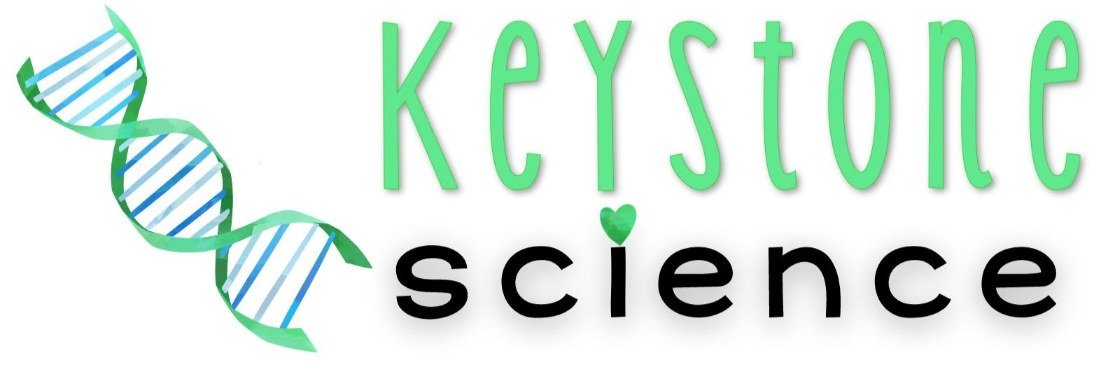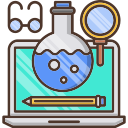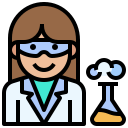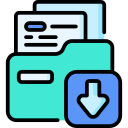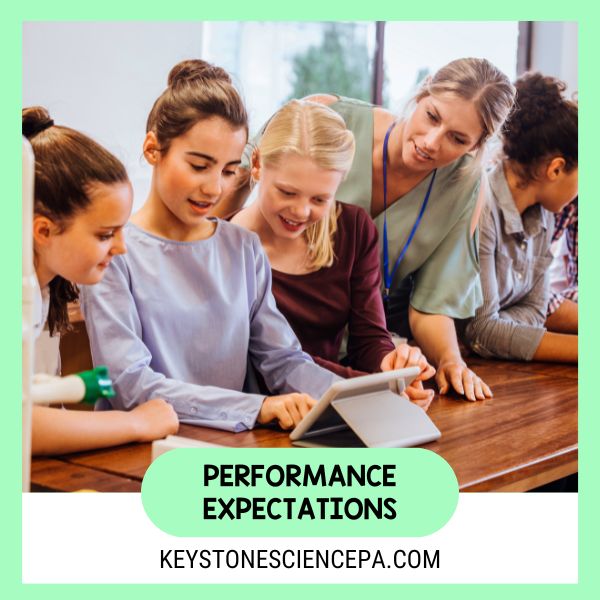What’s not to love about Earth Day? It’s literally a day where we can take the time to enjoy our planet by going outside and bringing awareness to environmental issues that are very much prevalent today.
Bonus! If you’re a science teacher, it’s a great way to mix things up and still highlight the importance of the day while sprinkling in those STEM elements we love so much!
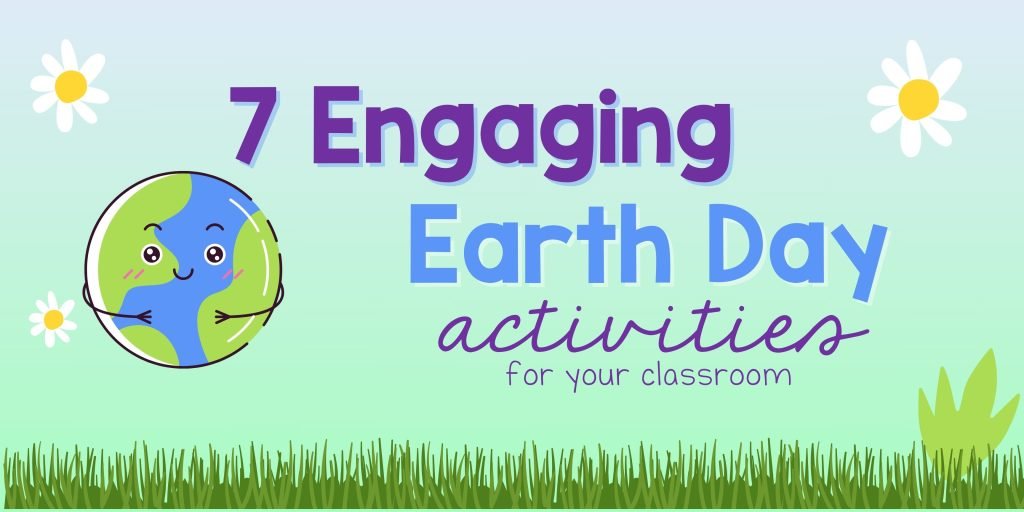
Each year, Earth Day falls on April 22 and in case you didn’t know, here are some quick facts about the day:
🌎Earth Day was first celebrated on April 22, 1970
🌳Earth Day was established to highlight the importance of environmental protection
🌎Earth’s geological age is estimated to be 4.5 billion years old
Aside from just identifying the holiday, you can use this as an opportunity for your students to really dive deep into debate, discussions and activities, giving more meaning to the day, instead of it feeling like any other Monday.
Keep reading and I’ll share with you 7️⃣ ready-to-use Earth Day related lessons and even some FREEBIES 🤩!
Of course, each lesson is aligned with NGSS standards, so that’s one less thing you’ll need to do.
If you already have an ecology lesson that you think would tie in perfectly with the holiday, but you’ve been wanting to find a way to make it more engaging or just beef it up a bit, then definitely check out the Great PExpectations post!
It’s the perfect place to start when looking at how to elevate your lessons using NGSS performance-based expectations. Each of the 7 Earth Day lessons are packed with engaging and meaningful strategies making these your new go to.
7 Engaging Earth Day Activities for Your High School Classroom
Ok, here we go! First up is….
1️⃣ The Pollinator and Native Plant Garden🪴 PBL
This project-based lesson allows students to explore a pollinator of their choice that is important to the ecosystem where they live.
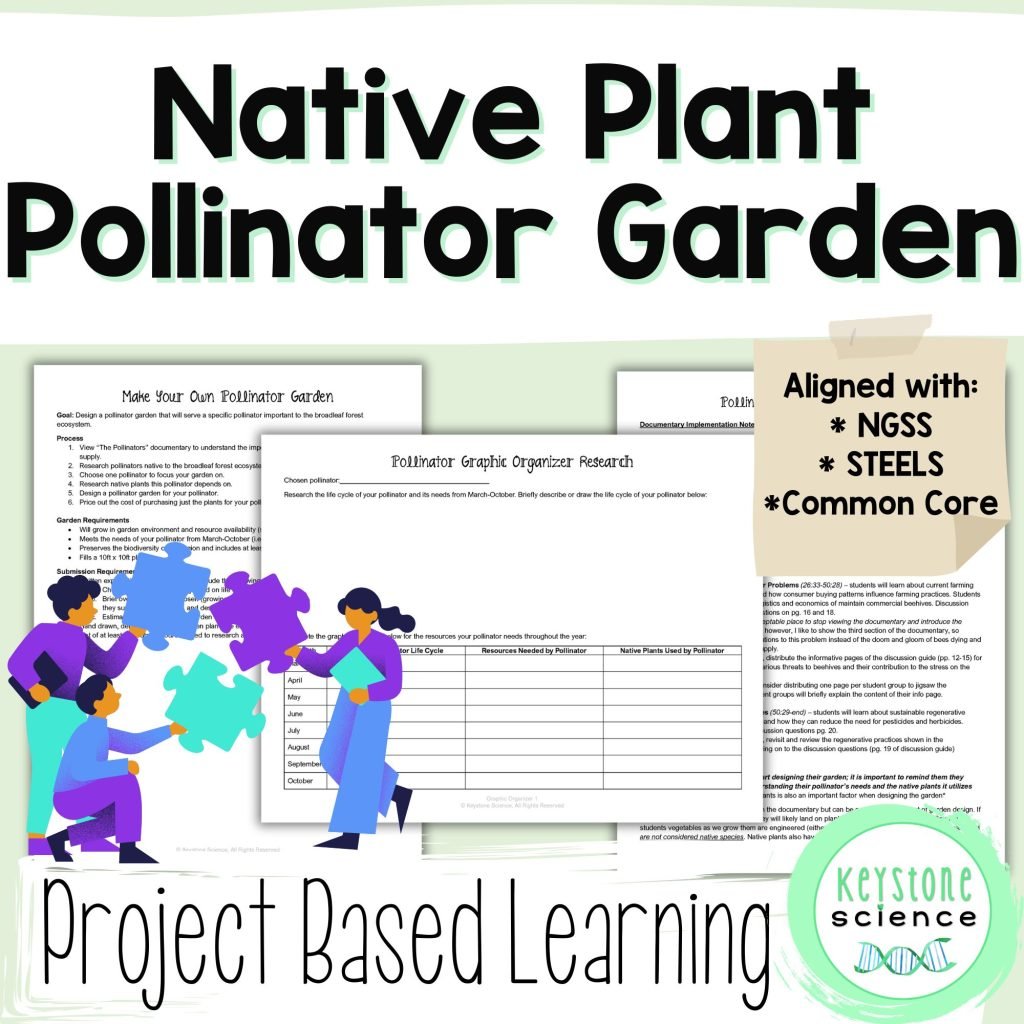
The objective is to design a garden which will support their life cycle. A little tip, this project can even be introduced the week before by showing The Pollinators documentary, but if you just want to present the project, that’s great too!
🌟What comes with The Pollinator and Native Plant Garden PBL?
- Complete teacher notes with suggestions on leading class discussions about The Pollinators & a documentary worksheet
- Student handout of project objectives and requirements
- 2 page teacher implementation notes
- 3 different graphic organizers to support student research
- Student project examples
- Fully editable rubric
After the documentary, students will choose 1 native pollinator to research. Students will then research native plant species which their native pollinators rely on during its life cycle and from there, will design a garden to support that life cycle.
Anytime you can integrate creativity with science is always golden because you will see and hear so many incredible group discussions, questions and ideas your students will have.
If you have students that love to practice their artistic skills or thrive in project-based learning, then you’ll want The Pollinator and Native Plant Garden PBL.
2️⃣Vanishing of the Bees 🐝 PBL and Socratic Seminar
Bees play one of the most important roles in our environment, and instead of just talking about what they do, we can dive deeper into this through a PBL.
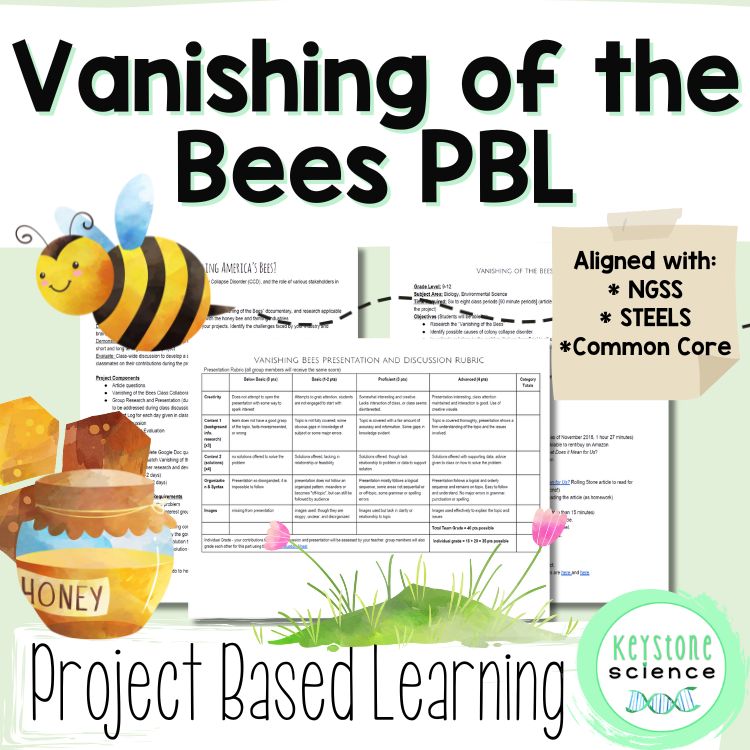
Project-based learning is essentially presenting a lesson where students gain knowledge and skills through long-term investigation to find a solution to a relevant problem.
It’s the perfect way for students to practice problem solving skills by being actively engaged in a real-world scenario through meaningful projects.
If you’re looking for a step by step breakdown of how to implement PBL in your classroom, then you’ll want to take a look at Using PBL and NGSS to Explore Genetics and Bioethics.
Back to The Vanishing of the Bees project and what it’s all about:
Similar to The Pollinator and Native Plant activity, you can introduce this lesson with a documentary, The Vanishing of the Bees (affiliate link).
Students will then assume the role of various stakeholders in the bee industry and research ways to solve the problem. This can be set up in groups to then research solutions that will benefit their role.
Each group will present their solutions to the class while the entire class engages in the presentation using a Socratic seminar method.
The goal is one or multiple solutions to the problem that can be agreed upon by the class AKA the stakeholders.
🌟What comes with Vanishing of the Bees 🐝 PBL and Socratic Seminar?
This no-prep lesson comes with:
- Teacher Resources & instructions
- Detailed lesson plan
- Informative article questions
- The Vanishing of the Bees graphic organizer
- Socratic seminar introduction presentation
- Self and Group Evaluations (Form and Document)
- Socratic seminar presentation and rubric
- Student PBL handout
- Project Log (Form and Document)
- Socratic Seminar agenda
The Vanishing of the Bees PBL is a great introduction to how to put students in the driver’s seat of their learning experience! Let them collaborate, share ideas, findings and collaborate on the most effective solution as a whole.
3️⃣Ecological Disturbances Stations 🔁
This is one of my favorite picks for Earth Day—it really shows how much we impact our planet. If you’re looking for an interactive way to dive into ecological issues, this one’s for you!

This station review is incredibly easy to set up and will immediately grab your students’ attention. It’s designed to engage them through interactive activities, making the learning process not only fun but also impactful. The best part is that it creates a meaningful connection to the material, helping students retain what they’ve learned in a way that feels natural and exciting.
Topics covered include:
- natural disasters and succession
- population dynamics
- invasive species
- climate change
- pollution
How to set up Ecological Disturbances:
First, set up 5 different stations around your classroom. If needed, the lesson can be done on student devices as an independent review. Set up a laptop at each station with the proper station activity already presented or allow students to use their own device when visiting each station.
Second, ensure each student or group has their own Ecological Disturbances Stations handout.
Third, set the timer for 10 minutes to allow each station to watch the assigned video clip and answer the analysis questions.
This will be done until each group has rotated through each station and have had enough time to discuss and complete the station questions.
Bonus, for those early finishers, there is an extension activity at the end of each station!
🌟What comes with the Ecological Disturbances Stations Review?
- 2 PDF versions of the student handout
- PDF station signs with QR codes to access the resource and video links
- Google Slides: student version
- Teacher implementation notes
- Teacher key
4️⃣Biogeochemical Cycling Labeling & Human Impacts🤚and a FREEBIE 😉…
Cycles play a vital role in shaping not only our planet but also the delicate balance of individual ecosystems. Many people may not fully grasp the profound impact these processes have. What we release into the atmosphere sets off a domino effect, ultimately influencing what the environment gives back to us.
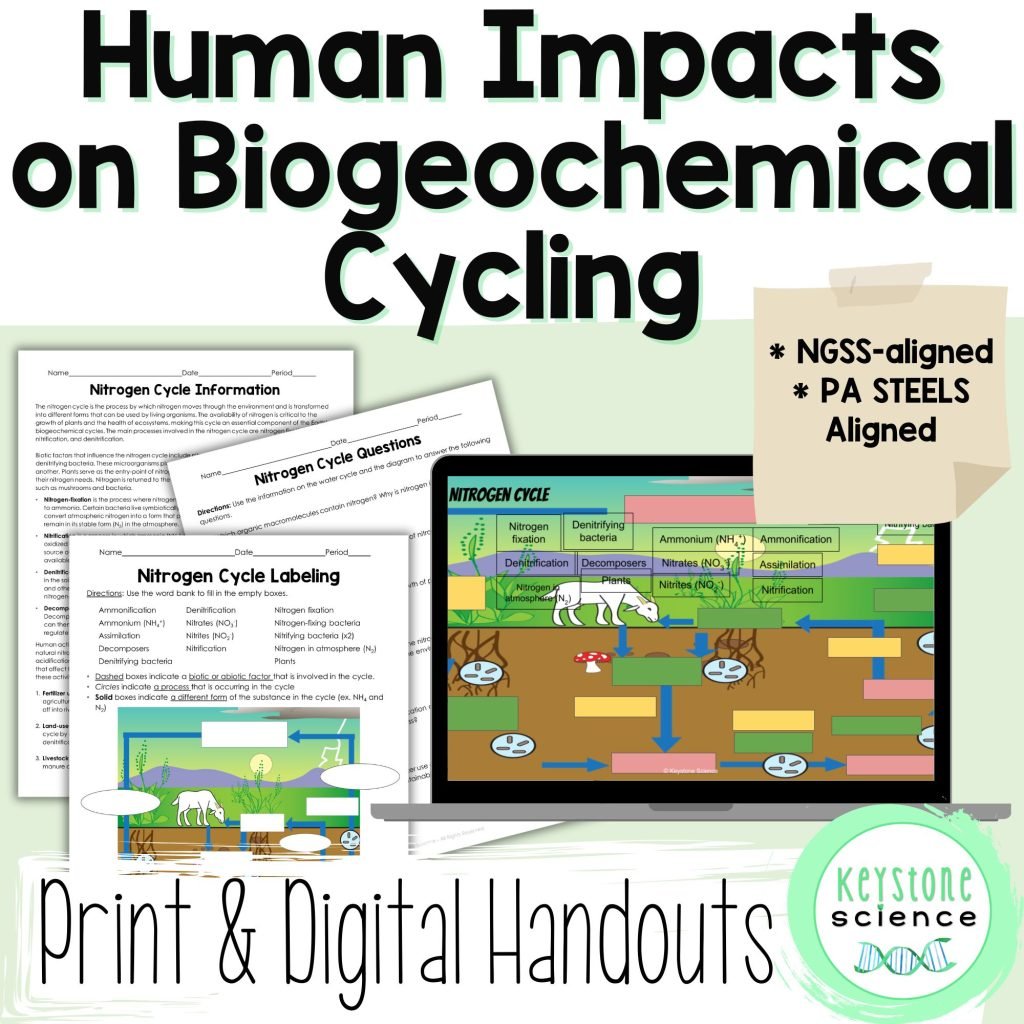
Biogeochemical cycles are always a great review for any ecology or human impact topic and it can almost always be related back to either the Water Cycle, Carbon Cycle, Nitrogen Cycle or Phosphorus Cycle.
Speaking of the 💦Water Cycle…here is a FREE 3 page Water Cycle & Human Impacts review you can use to celebrate Earth’s most abundant resources.
This drag-and-drop interactive biogeological cycles review is offered in both a digital or printable version for each of the cycles. If choosing to present digitally, your students will simply drag and drop the terms in text boxes to the appropriate place on the diagram.
🌟What comes with the Biogeochemical Cycling Labeling & Human Impacts🤚?
- Google file, which can also be downloaded as a PowerPoint
- 1 page overview of each of the water cycle, carbon cycle, nitrogen, cycle, and phosphorus cycle
- 1 page overview of the human impacts on each cycle
- Information and student comprehension questions for each cycle
- Answer keys
Cycles are a great reference point because even though we may not recognize the impact we are having on the cycles, it is what we live in everyday.
Think about other ways you could extend on a biogeological cycles review; have it be used as an introduction activity to a PBL or even as a diagram to a stance in a debate. Using this simply as a labeling activity is just the beginning.
5️⃣The Bioethics Debate 🗣️
Earth Day was founded to raise awareness about environmental protection and the impact of human activities on the planet.
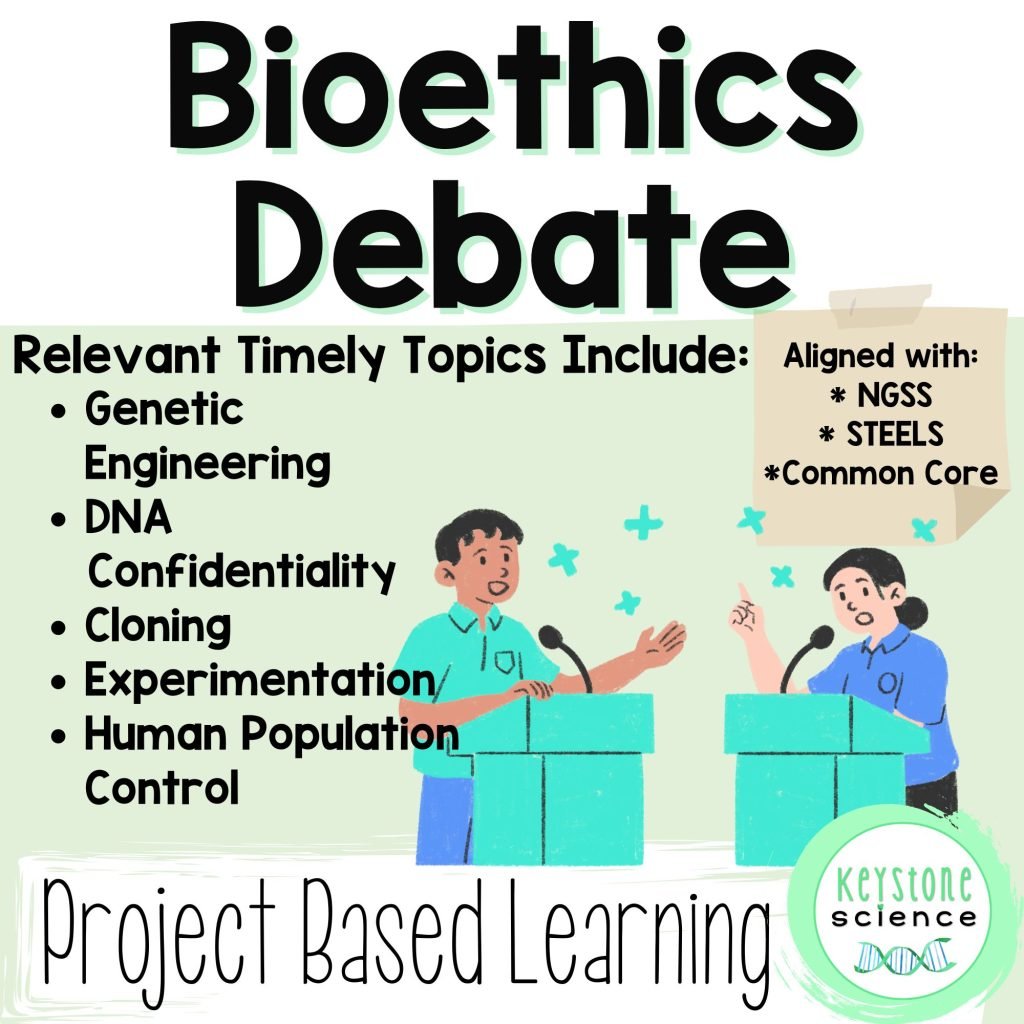
That being said, there are so many opportunities for your students to engage in environmental topics, which makes the Bioethics Debate the perfect set up.
Why not let high school students practice their skills…in this case, their debate skills 🙃 With a partner, students will research and present both sides of an ethical problem. This problem can be assigned by you from an extensive list, included in the lesson.
Set-up is simple with a clearly outlined debate format. Each pair will present an opening statement, there will be an audience Q&A, and finally, a rebuttal or closing argument.
In case you’re worried about having students off task during presentations, this activity even requires audience members to complete a debate observation sheet for two of the debates to choose a “winner”. Plus, audience participation is included in the rubric.
🌟What comes with the The Bioethics Debate 🗣️?
- Teacher Notes of Bioethics Debate lesson plan
- Bioethics debate handout
- Bioethics debate outline
- Bioethics debate organizer
- Rubric and debate requirements
- Debate Observation Sheet
Such a fun way to kick start the week!
6️⃣ Ecological 🌳👣 Footprint (and did I mention this is free!)
It’s no secret that in order for lessons to be memorable, they also need to be meaningful. The Ecological Footprint activity is exactly that!

This is a personal favorite of mine to help to make a genuine connection to how we are directly influencing the shift in ecosystems through our carbon footprint AKA our daily activities that we might not give a second thought.
First, download the free Ecological Footprint handout here!
Next, using the website www.footprintcalculator.org, students will take inventory of their impact on Earth based on specific activities.
The calculator requires some information students may need to ask an adult at home.
Last, after calculating their carbon footprint, students will read about ways to reduce their footprint and retake the survey with those changes in mind and see how it can change their carbon footprint.
As a final reflection, students will write a summary of actionable steps of how they can realistically reduce their footprint immediately!
7️⃣Letter to a Politician 📨
Whether it’s on the news, social media or a bumper sticker, there are plenty of ways people choose to share their voice and the importance of political activism on environmental issues.

Once students have a better understanding of how an ecosystem functions, their individual carbon footprint or why pollinators need to be protected, the Letter to a Politician activity is a great closer to an ecology unit!
First things first, grab the FREE Letter to a Politician activity here 👈
Then, ask students to pick an environmental issue they feel strongly about and believe needs to be highlighted.
Your students will be guided through how to write an effective letter to their local, state, or federal elected officials related to an environmental issue of their choice. By creating opportunities for students to be more actively engaged in their education and practice sharing their voice, this skill will translate beyond the classroom and maybe even spark a passion of a future inventor sitting right in your classroom!
I hope you found at least one of these Earth Day activities helpful!
If you are looking for more hands-on lessons, head over to my webstore (Keystone Science) and browse through products covering TONS of topics in biology and chemistry.
I’d love to hear from you about how these lessons went in your own classroom!
Send me an email at 👉🏻 [email protected] with the subject: Earth Day Activity and let me know your experience.
If you’re wanting more, here you go:
💡Feel free to explore Keystone Science for ready-to-use NGSS aligned notes and activities.
💡Subscribe to my email list for weekly tips direct to your inbox.
💡Follow me on Instagram for daily tips, motivation, and facts you can use in your classroom!
🌟Share in the comments or email me directly 👉🏻 [email protected]
